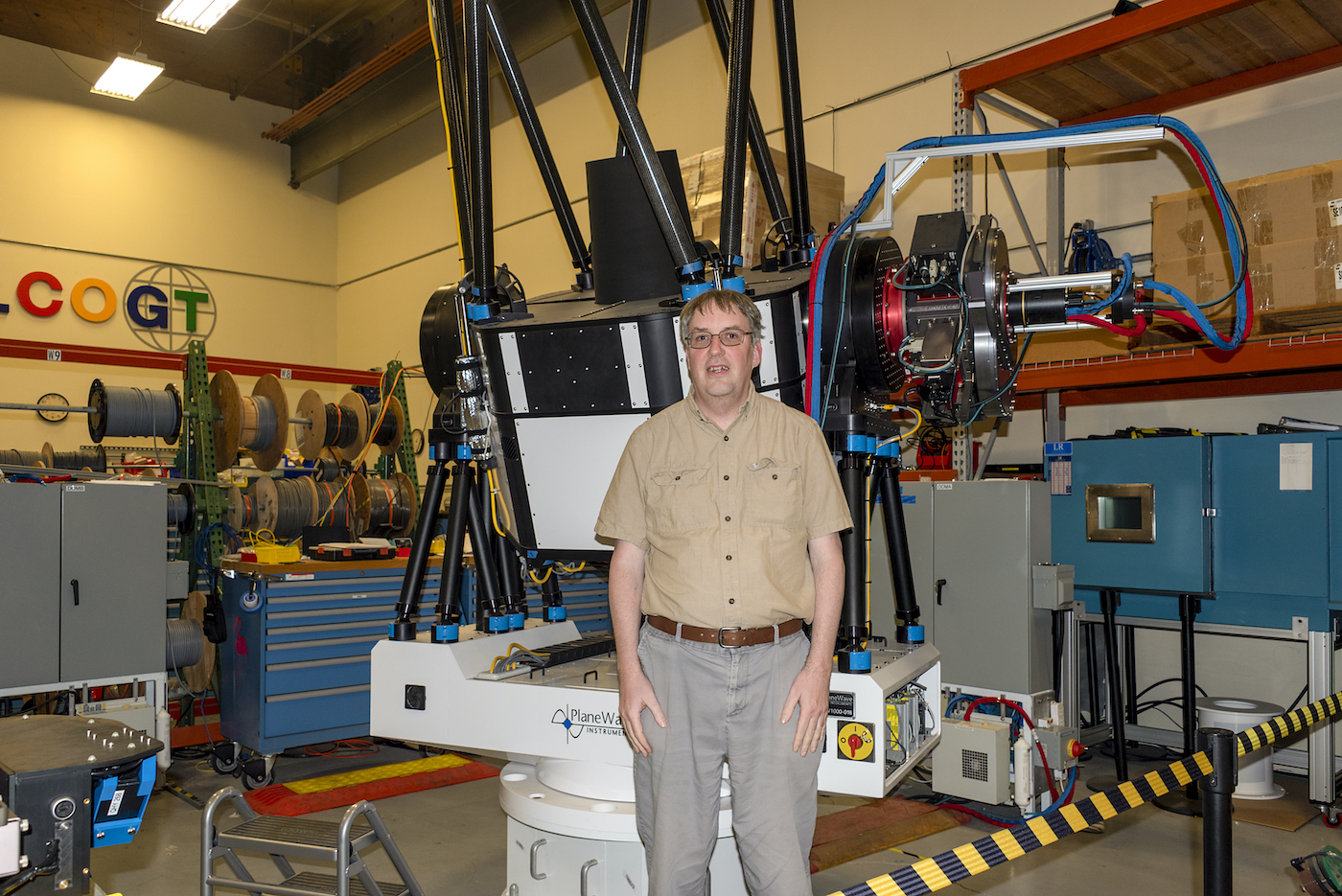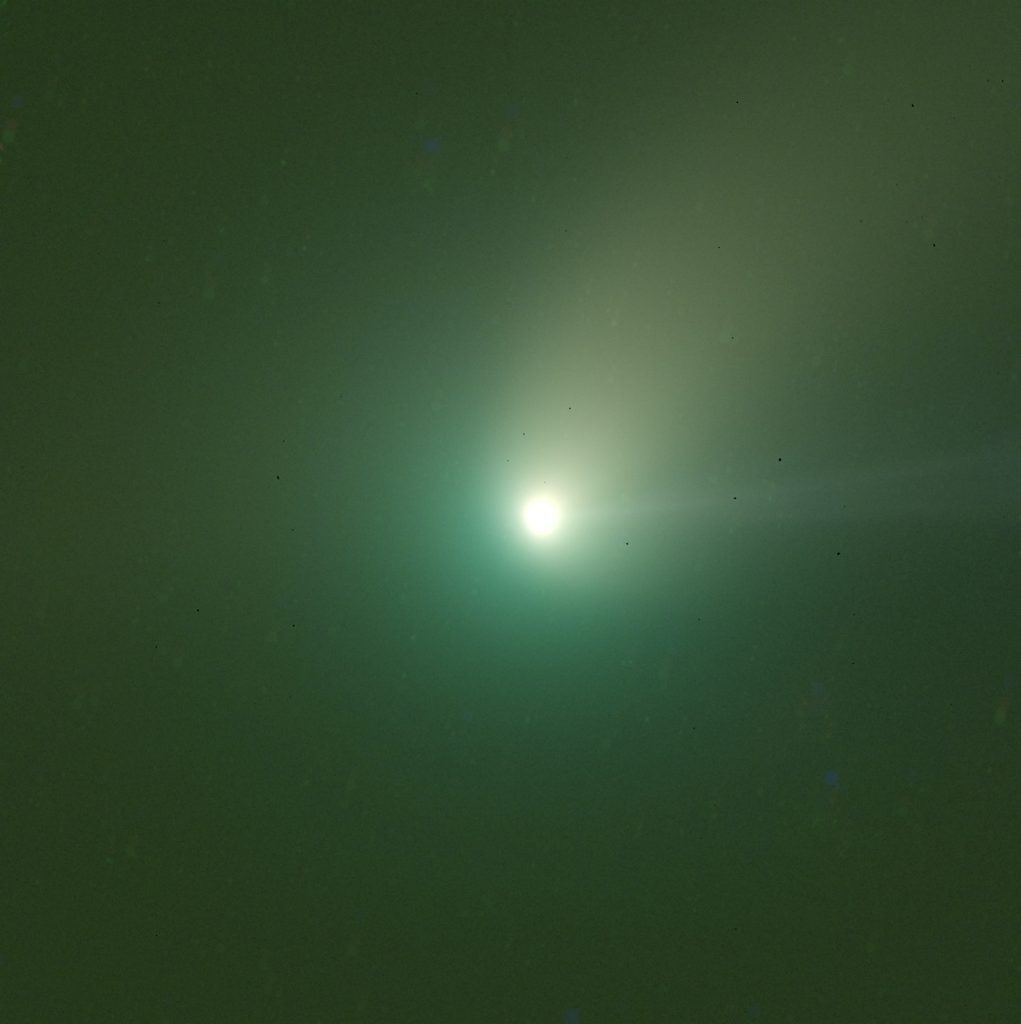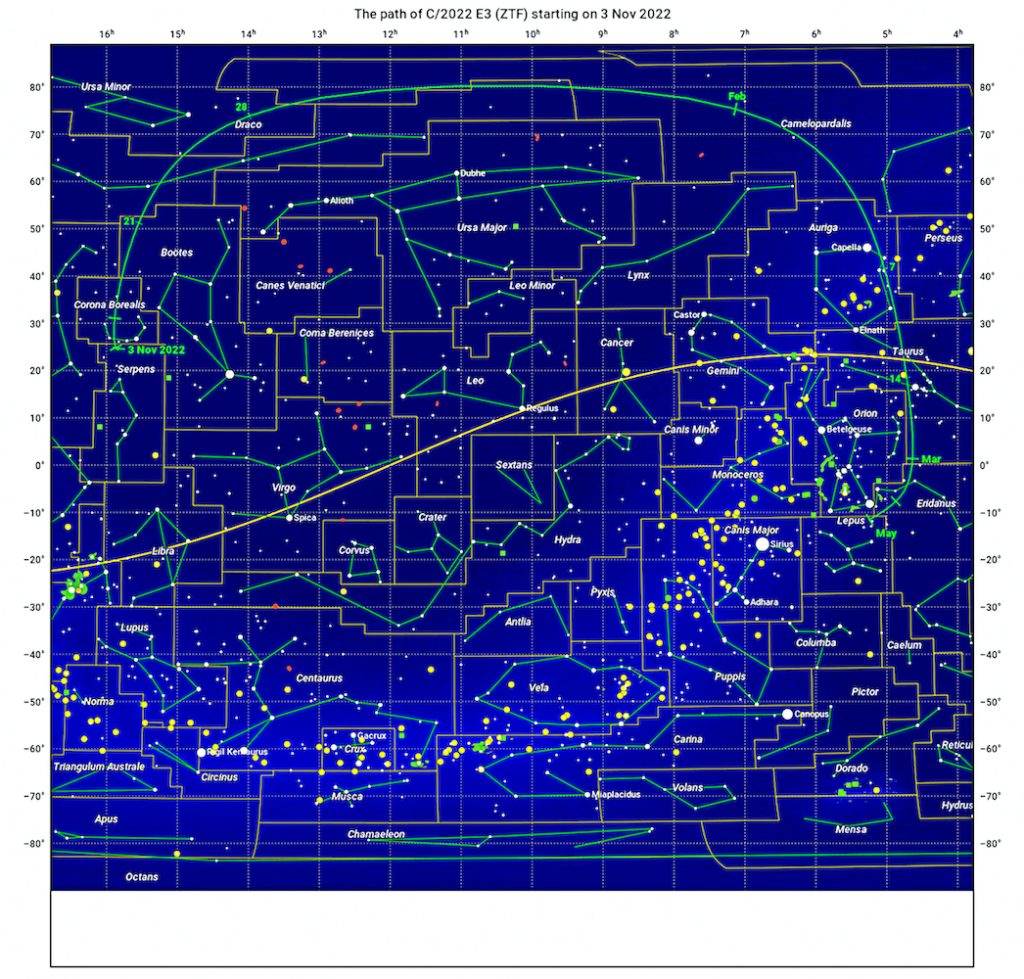A Comet Occurrence 50,000 Years in the Making

Get your popcorn and astronaut ice cream ready for some rare astral entertainment. The famous Comet C/2022 E3 ZTF – at its peak February 1 and 2 – can be viewed at NNE, 23 to 40 degrees above the horizon, from 9 pm to sunrise, with amateur telescopes and possibly your 10x binoculars. The significance of this moment lies in the fact that astrophysicists estimate it is a 50,000-year-old event that carries the history of our solar system – Yes, Carl Sagan fans, the star-stuff from whence we came. Latest views show a bifurcated tail and cosmic dust. On February 10-11, it cruises one degree from planet Mars – the green-blue comet bringing a pop of color to accent the red-gold Mars. View it before it leaves on Valentine’s Day, as its path is predicted to head out of our solar system and into the interstellar.
This ancient comet was first discovered on March 2, 2022, by astronomers Bryce Bolin and Frank Masci using the Zwicky Transient Facility (ZTF) survey, labeled “ZTF, obs. code: I41.”They first tracked it as a rocky asteroid. The next night, Japanese astronomer Hirohisa Sato, who studies the orbits and brightness of comets for the Oriental Astronomical Association, viewed its tail and relisted it as a comet (which contains ice and dust that impart the characteristic tail). The ZTF is the latest camera on the Samuel Oschin Telescope at Caltech’s Palomar Observatory San Diego, which uses wide-field surveys via 16 CCDs of 6144×6160 pixels each, enabling each exposure to cover an area of 47 square degrees of sky per image. To put that in perspective: 247 times the area of the full moon, or a full scan of the northern visible sky, every three nights.

For more on how to view it, and its legacy data, I sat down with the expert, Dr. Tim Lister of the Las Cumbres Observatory – co-lead of the LOOK project global team on comets and member of the DART Mission team – who helped break down the comet, its photograph, and path, in both technical and general terms for us.
Q. How is the Las Cumbres Observatory (LCO) taking the comet’s images?
A. Using different stacking methods of multiple images for the final image. The one here was taken with one of the LCO’s one-meter telescopes at Teide Observatory on Tenerife in the Canary Islands, Spain. Note the narrow, faint blueish tail pointing to the right, is the ion tail which always points away from the Sun. There is also a broader fan-shaped yellowish dust tail and the greenish coma around the comet’s nucleus, which is produced by diatomic carbon (C2).
How can backyard astronomers view it?
It is not a completely bright comet, so one needs a completely dark sky area away from city light pollution, and a clear view of the horizon line, as the comet is approximately 40 to 50 degrees above the horizon in the Santa Barbara area. Currently it is up all night because it is a circumpolar object, so look for it an hour or so after sunset.
How fast is it moving and how bright is it?
At its fastest, it is taking two hours to cross an area relative to the size of a full moon. Hollywood likes to depict comets whisking across the sky, but that is not true, they move slowly and are too far away to appear to move quickly. The full moon is a half-degree across. The comet moves 1.5 to 6.5 degrees. Its brightness is as faint as the faintest stars one can see without a telescope. It’s a comet, which is spread out more than a star.
What will it look like?
You almost certainly will not be able to see the green gas color with the naked eye or binoculars, the color only comes out in long exposure photographs, unless it’s a really bright comet. You’ll see a fuzzy patch of light in the sky with the naked eye. The appearance of it is changing rapidly from night to night as it is passing through the orbital plane of the solar system (SS). You will notice changes in its tail edge tilt and direction.
Its legacy data and 50,000-year orbit?

This is a long period comet, that came into the SS from the Oort Planet Clouds. It is not the first time it’s come into our SS. Comets are bodies that are left over from the formation of the SS, they are evidence and traces of what the early solar system was like when the planets et al. formed.
This comet is very elliptical, and its very long orbit takes it out of the SS.
When it first came into view last year, we made a fit as to the positions of it and worked out an orbit, and that made us discover it was on this 50,000-year orbit.
Because it goes out such a long way, it is only loosely connected to the SS, so it does not take much in a change of its speed to make it not attached to our SS.
As it came into our SS it has been disturbed by the gravity of the giant planets Jupiter and Saturn, which changed it from a closed 50,000-year orbit to an open orbit, it will not come back again, but that depends on what happens to it over the next months as it heads back out of the SS. If it comes close to other planets, it will change its gravitation force again.
Comets have non-gravitational forces. The effect [heat] of the sunlight on a comet causes the material of it to escape, which acts like a thruster causing the comet to move around. What can happen is the sun can reach a pocket of very volatile material and there will be a big outburst of the comet, it will get brighter or disintegrate, which really changes the orbit. So constant observation is necessary. As David Levy wrote, “Comets are like cats, they have tails and do whatever they want.”
Comets are this pristine leftover material that has generally never been heated up before, so how they are going to act when they come into the SS and get heated up is unpredictable.
And the Oort Cloud…?
Unlike asteroids, which are mostly in the belt between Mars and Jupiter and mostly in the plane of the SS, comets like this one come at us from all directions and angles. In the 1940s, a Dutch astronomer Oort said that for us to get these comets, they must come from outside our SS. Everything out in the Oort Cloud is way out there, and we can only see what’s in them when it comes into our SS, and we won’t have a telescope to view Oort for a number of years. It is about 10 to 20,000 astronomical units out, e.g., the Earth is one astronomical unit out from the Sun, Jupiter is five.
LCO’s monitoring of comets?
I’m a co-lead of the key project on comets for the LCO with thirty astronomers globally across 19 time zones, called the LOOK Project. One of the main goals is to look at the dynamically new comets coming in from the Oort Cloud for the first time, how they behave when they turn on and start becoming active.
We are doing this because the European Space Agency has a mission called the “Comet Interceptor,” which is going to launch in 2029 and do a fly-by of one of these new comets. To build the space craft for the mission we have to have this data.
The LCO’s role is writing software that aggregates new comet discoveries that come in.
We’ve been monitoring this comet every few days since April 2022. We monitor it in two filters, a green filter and a red filter, one filter is sensitive to the gas and the other to the gas and the dust. We are measuring how its brightness and size changes with time.
LCO is part of the AEON (Astronomical Events Observatory Network) and is scheduling the four-meter telescope in Chile, South Africa, and Australia for when this comet heads to the southern hemisphere.
411:
https://lco.global
https://in-the-sky.org/news.php?id=20230201_19_101







